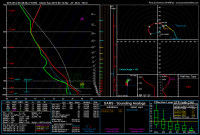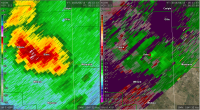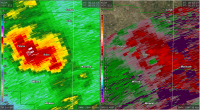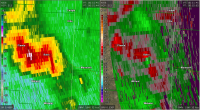Robert Forry
EF3
At least for now, late Saturday afternoon/early evening look conditionally like a severe weather opportunity across SC ND and parts of adjacent SD. An approaching upper level system and Pacific trough should allow for a surface low to develop out over eastern Montana, and as the GFS is depicting, pulling in fair amount of Gulf moisture (70 deg + progged near northern Lake Oahe), with SBCAPE over 5,000 just south of the WF. Good lapse rates, but with flow aloft looking anemic at only 20 kts my thinking for now would favor slow, right moving HP sups with some large hail. Wouldn't rule out a TOR with that hodo below. I'll be curious to see how the short range models deal with this as the day draws near.
Approximately Elgin, ND @ 0Z Sunday
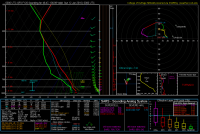
Approximately Elgin, ND @ 0Z Sunday


